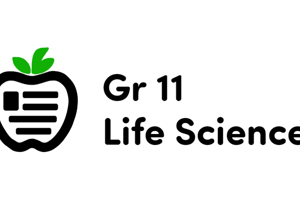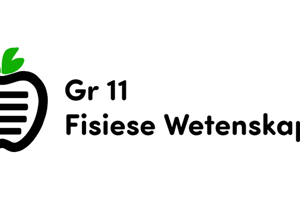Podcast
Questions and Answers
Why is volume, rather than mass, the preferred measurement for gases?
Why is volume, rather than mass, the preferred measurement for gases?
- Volume is easier to measure, generally larger, and more precise compared to mass. (correct)
- Mass is affected by temperature changes, while volume is not.
- Measuring volume doesn't require sophisticated instruments and provides direct information about the number of moles.
- The mass of a gas is negligible and therefore not useful.
According to Avogadro's hypothesis, what relationship exists between two gases at the same temperature and pressure?
According to Avogadro's hypothesis, what relationship exists between two gases at the same temperature and pressure?
- Equal volumes will contain the same number of particles. (correct)
- Different volumes will contain the same number of particles.
- Different volumes will contain different numbers of particles.
- Equal volumes contain different numbers of particles.
What is the molar volume of an ideal gas at Standard Temperature and Pressure (STP)?
What is the molar volume of an ideal gas at Standard Temperature and Pressure (STP)?
- 44.8 L/mol
- 22.4 L/mol (correct)
- 24.8 L/mol
- 11.2 L/mol
If 2 moles of carbon dioxide gas are at SATP, what volume will they occupy?
If 2 moles of carbon dioxide gas are at SATP, what volume will they occupy?
A gas occupies 11.2 L at STP. How many moles of gas are present?
A gas occupies 11.2 L at STP. How many moles of gas are present?
In a chemical reaction where all reactants and products are gases and temperature and pressure are constant, what are the volume relationships?
In a chemical reaction where all reactants and products are gases and temperature and pressure are constant, what are the volume relationships?
If 2 liters of hydrogen gas and 1 liter of oxygen gas react according to: 2H2 (g) + O2 (g) → 2H2O (l), how many liters of water is produced?
If 2 liters of hydrogen gas and 1 liter of oxygen gas react according to: 2H2 (g) + O2 (g) → 2H2O (l), how many liters of water is produced?
What volume of oxygen gas is required to completely combust 100 mL of butane (C4H10)? The balanced equation is: 2C4H10 (g) + 13O2 (g) → 8CO2(g) + 10H2O(g)
What volume of oxygen gas is required to completely combust 100 mL of butane (C4H10)? The balanced equation is: 2C4H10 (g) + 13O2 (g) → 8CO2(g) + 10H2O(g)
Given the reaction: $2C_4H_{10}(g) + 13O_2(g) \rightarrow 8CO_2(g) + 10H_2O(g)$, if 120 mL of $C_4H_{10}$ is consumed, what volume of $CO_2$ is produced?
Given the reaction: $2C_4H_{10}(g) + 13O_2(g) \rightarrow 8CO_2(g) + 10H_2O(g)$, if 120 mL of $C_4H_{10}$ is consumed, what volume of $CO_2$ is produced?
Which of the following is NOT a characteristic of an ideal gas?
Which of the following is NOT a characteristic of an ideal gas?
Which conditions allow real gases to behave most ideally?
Which conditions allow real gases to behave most ideally?
What is the value of the ideal gas constant, R, when using units of kPa, L, mol, and K?
What is the value of the ideal gas constant, R, when using units of kPa, L, mol, and K?
If 0.78g of hydrogen gas is at 22°C and 125 kPa, what is its volume?
If 0.78g of hydrogen gas is at 22°C and 125 kPa, what is its volume?
What mass of argon gas is needed in a 0.88 L tube to produce SATP conditions?
What mass of argon gas is needed in a 0.88 L tube to produce SATP conditions?
Which of the following is a correct application of the Ideal Gas Law, $PV=nRT$, when determining the moles of gas present?
Which of the following is a correct application of the Ideal Gas Law, $PV=nRT$, when determining the moles of gas present?
When using the Ideal Gas Law, what is the standard unit for temperature?
When using the Ideal Gas Law, what is the standard unit for temperature?
Flashcards
Molar Volume (Vm)
Molar Volume (Vm)
The volume occupied by one mole of any gas at a specific temperature and pressure.
Avogadro's Hypothesis
Avogadro's Hypothesis
The volume of gas is directly proportional to the number of gas molecules (moles) at constant temperature and pressure.
Molar Volume at STP
Molar Volume at STP
The volume of 1 mole of any gas at standard temperature and pressure (STP), which is 0°C and 101kPa.
Molar Volume at SATP
Molar Volume at SATP
Signup and view all the flashcards
Molar Volume Conversion
Molar Volume Conversion
Signup and view all the flashcards
Combining Volumes
Combining Volumes
Signup and view all the flashcards
Volume Ratio
Volume Ratio
Signup and view all the flashcards
Gas Volume Calculation
Gas Volume Calculation
Signup and view all the flashcards
What is an Ideal Gas?
What is an Ideal Gas?
Signup and view all the flashcards
When do Real Gases Behave Like Ideal Gases?
When do Real Gases Behave Like Ideal Gases?
Signup and view all the flashcards
What is the Ideal Gas Law?
What is the Ideal Gas Law?
Signup and view all the flashcards
What is R in the Ideal Gas Law?
What is R in the Ideal Gas Law?
Signup and view all the flashcards
How do you calculate the volume of a gas using the Ideal Gas Law?
How do you calculate the volume of a gas using the Ideal Gas Law?
Signup and view all the flashcards
How do you calculate the mass of a gas needed for SATP conditions using the Ideal Gas Law?
How do you calculate the mass of a gas needed for SATP conditions using the Ideal Gas Law?
Signup and view all the flashcards
How can you determine the molar mass of a gas using the Ideal Gas Law?
How can you determine the molar mass of a gas using the Ideal Gas Law?
Signup and view all the flashcards
What are some applications of the Ideal Gas Law?
What are some applications of the Ideal Gas Law?
Signup and view all the flashcards
Study Notes
Chemical Properties of Gases
- Volume is the best measurement to use for gases, as it's generally easier, larger, and more precise than mass.
Avogadro's Hypothesis
- Equal volumes of gases at the same temperature and pressure contain the same number of particles.
- The number of particles in a mole is 6.02 x 1023 (Avogadro's number).
Molar Volume
- At STP (0°C, 101 kPa), 1 mole of any gas occupies 22.4 liters.
- At SATP (25°C, 100 kPa), 1 mole of any gas occupies 24.8 liters.
- Molar volume allows conversion between volume and moles (and mass).
Combining Volumes
- In a chemical reaction involving gases, the volumes of reactants and products are in simple whole-number ratios, if temperature and pressure are constant.
- Not all reactants or products need to be gases for the law to apply, but the law only applies to gases.
Ideal Gas Law
- Ideal gases are hypothetical gases where molecules are far apart, have no forces between them, have perfectly elastic collisions, and lose no energy.
- Real gases can behave ideally under specific conditions (low pressure and high temperature).
- The Ideal Gas Law describes the relationship between pressure (P), volume (V), number of moles (n), and temperature (T) of an ideal gas.
- The equation for the ideal gas law is PV = nRT
- R is the universal gas constant and equals approximately 8.314 kPa⋅L/(mol⋅K).
- Often, mass is the starting point in gas law problems. Convert mass to moles, then use the ideal gas law.
- Conversely, you can use the ideal gas law to determine the mass needed, given the volume, pressure and temperature.
Practice Problems
- Sample problems are included to illustrate calculations using molar volume and the ideal gas law. Calculations were provided that demonstrate using the information provided in the problems to solve problems relating volumes, moles and masses of gases.
Studying That Suits You
Use AI to generate personalized quizzes and flashcards to suit your learning preferences.
Related Documents
Description
Explore the key concepts of the chemical properties of gases, including Avogadro's Hypothesis and the Ideal Gas Law. Understand the significance of molar volume and how gas volumes relate in chemical reactions. Test your knowledge with this engaging quiz!



